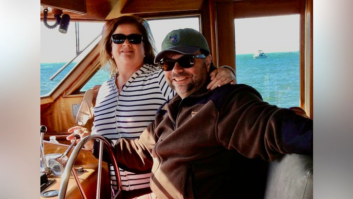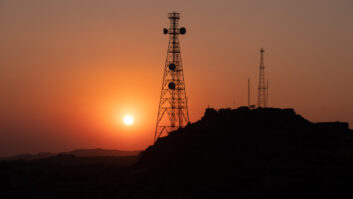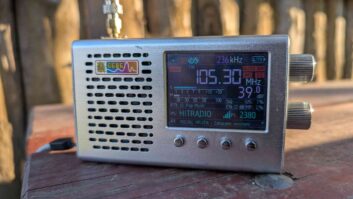The author is chairman of Digital Radio Mondiale.
When is the last time you heard a shortwave radio transmission? And why should you put up with possible crackly audio and some interference when we have now internet, satellites, FM and all forms of digital radio?
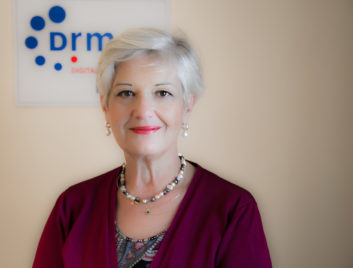
This holds true if you are in London, Boston, Paris or Toronto. But what if you are on an island in Indonesia, or find yourself in west China, in Kashmir or in Brazilian Amazonia? Because, whether we like it or not, there are several remote places in this vast world, many of which still depend on shortwave broadcasting.
In the past (think the Cold War) a lot of people were able to obtain free information from the international shortwave program. Many international broadcasters were running expensive, energy-guzzling transmitters for this frequency band “without borders” that ranges from 1.7–30 MHz (176.3–10.0 m), from the high end of the medium frequency band just above the medium wave AM broadcast band, to the end of the HF band.
Shortwave is just short of a miracle, actually. When it is beamed at an angle, it hits the ionosphere. A mirror around the Earth and then it falls like a ball at great distances, beyond the horizon. Thus these transmissions reach listeners over large areas, continents and beyond. Two or three high-power transmitters can potentially cover the entire world.
Shortwave is used not just by international radio stations or radio amateurs but is also essential for aviation, marine, diplomatic and emergency purposes. Shortwave signals are not restricted or controlled by the receiving countries and, as frequencies change in winter and summer, they need to be coordinated internationally.
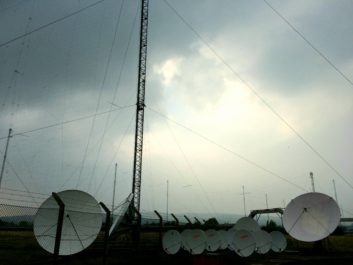
This is the task of the High Frequency Co-Ordination Conference (HFCC), a non-governmental, non-profit association, and a sector member of the International Telecommunication Union (ITU). This group meets twice a year to produce a coordinated schedule for a summer and winter season, ironing out any interference issues among countries or broadcasters. At their recent meeting last month, they also discussed — once again — the future of shortwave.
Nobody can deny that shortwave goes beyond geographical, cultural, religious, political barriers, is free and can be consumed anonymously, which few platforms can claim nowadays. About 20 years ago, the BBC decided to cut its shortwave transmissions to countries such as the United States and other developed parts of the world, since these territories, or rather “markets” were served by FM and the internet etc. Other important international broadcasters, including Deutsche Welle, Radio Australia and Radio Exterior de Espana soon copied this model..
But the BBC kept shortwave for its large audiences in Africa and part of Asia. At the moment the major shortwave broadcasters are BBC, Voice of America, All India Radio, China Radio International, Radio Japan, Radio Romania, KBS Korea and Voice of Turkey and many more.
Twenty years after the first big blow to shortwave, this frequency band and its potential is being revisited. After all, not all the listeners in the world have broadband, smart phones, data plans, connected cars or enough disposable income. And analog radio in general continues to be resilient: a third of households in the United Kingdom don’t have a digital radio (DAB penetration has reached 64 percent). That is 25 years after the first DAB broadcasts started in London in 1993), and almost 20 years after the commercial players join in.
Shortwave has been put on the agenda again as some of the old transmitters needed to be replaced or upgraded. Meanwhile it has become digital and this means more efficient transmitters and significant energy savings of up to 80 percent compared with the old analog. No wonder most of the analog shortwave transmitters sold today are DRM-capable or ready.
In 2019 the BBC is still on shortwave and has large audiences in countries like Nigeria, having recently introduced new shortwave transmissions in additional languages. In Australia there was recently a wide consultation on the possible reintroduction of shortwave for the many Pacific islands depending on the services of Australian broadcasters, which had rushed to close down good shortwave facilities in the pursuit of internet and local digital.
Radio Exterior Espana has doubled its transmissions since October, adding other languages than just Spanish to its schedule. Radio Moscow, the blunt propaganda tool of the Cold War, has been transformed into the sleek Radio Sputnik. And Radio China has quietly upgraded some of its many shortwave transmitters for domestic use and is now covering practically the whole country with digital (DRM) shortwave signals.
[Read: China Makes Its DRM Move]
Digital Radio Mondiale was originally invented to offer medium (AM) and large coverage (HF) and the advantages of the good audio quality and extra multimedia services that can take shortwave into the 21st century. Maybe DRM was ahead of its time. The phasing in of digital broadcasts internationally was not in
tandem with the production and sale of receivers, which remains a regional and national business. Since its birth DRM has proven that it is a suitable option for shortwave offering an good digital quality of audio and even short live video at great distance without fading and crackly sound.
Now, at last, there are DRM receivers capable of receiving shortwave, there are broadcasts and interested broadcasters. Quietly and surely shortwave is being re-examined and appreciated for the quality of broadcasts and its potential as a “crisis radio” too. It can become crucial in emergencies when local and regional radio stations, satellite and internet may be off the air due to damage. Broadband is getting cheaper but is limited, 5G will come but not just yet, digital shortwave is here.
The golden age of analog shortwave broadcasting is probably over. However the band has an important role and great potential. It needs to be appreciated and examined with an open mind as there now seems to exist a true alignment of national interests, technical possibilities and receiver availability, which could give shortwave a new lease on life as a viable and unique platform.

